When it launched in 1955, the MGA represented a significant break with tradition for the men from Abingdon-on-Thames.
At long last, MG had produced a contemporary design a world away from the outdated pre-war design of the T-Type cars and their running boards, separate wings, and tall, narrow bonnets.
The new car, with its beautiful flowing lines, took the world by storm, with the vast majority heading for the lucrative US market.
We look at the history of the MGA.
The birth of the MGA closed a door to the traditional past, and ushered in a new, modern chapter at the MG factory.
But it had been a long time coming, with the seeds of the car’s design sown way back in 1951 with MG designer Syd Enever’s sleek body for George Phillips’ MG TD Le Mans racer, codenamed EX176.
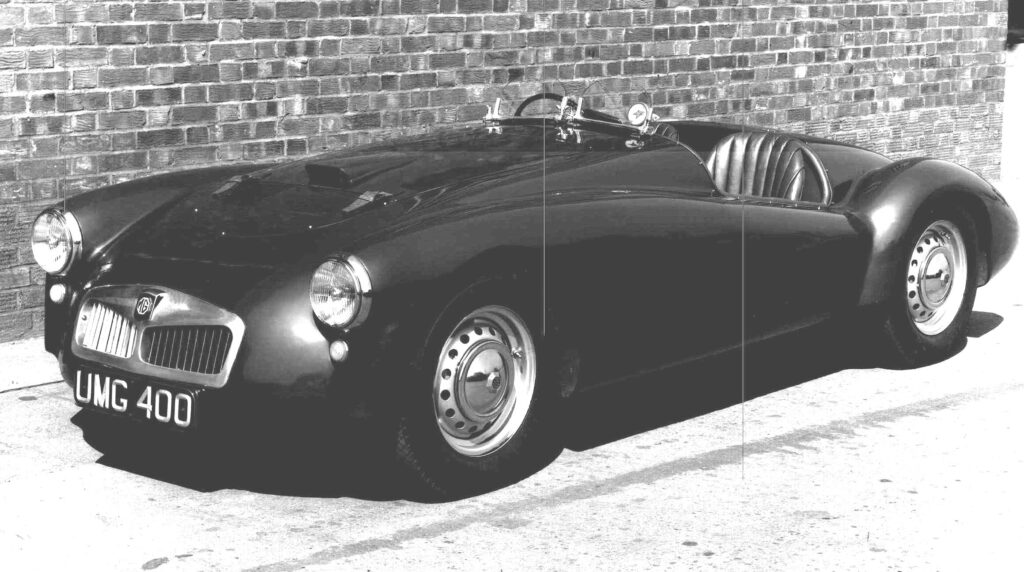
Phillips and his co-driver Alan Rippon dropped out after 80 laps, but the design had caught the imagination of MG’s bosses and two more prototypes were created, codenamed EX175, with a view to replacing the MG T-series cars.
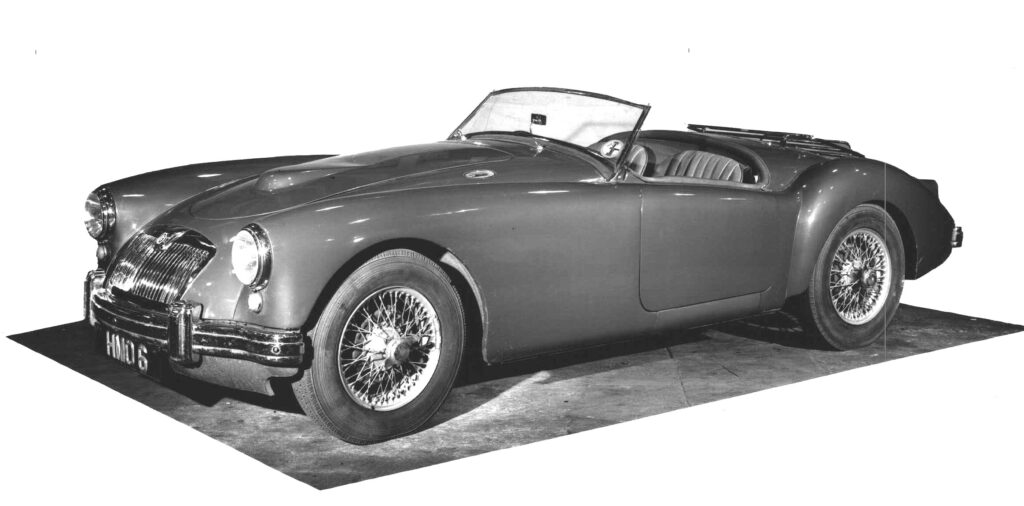
A new chassis was developed, wider than the TF’s to allow room for the driver to sit lower in the body, and one of the prototypes was developed into a road-registered test car, number plate HMO 6.
MGA delayed by Austin-Healey
But there were a couple of flies in the ointment – the 1952 merger between Austin and Morris / MG to create the British Motor Corporation (BMC), and the subsequent deal between former Austin and now BMC boss Leonard Lord and Donald Healey.
The merger took control out of MG’s hands, and Lord had already agreed to jointly produce the Austin-Healey 100/4 when he was shown the MGA prototype.
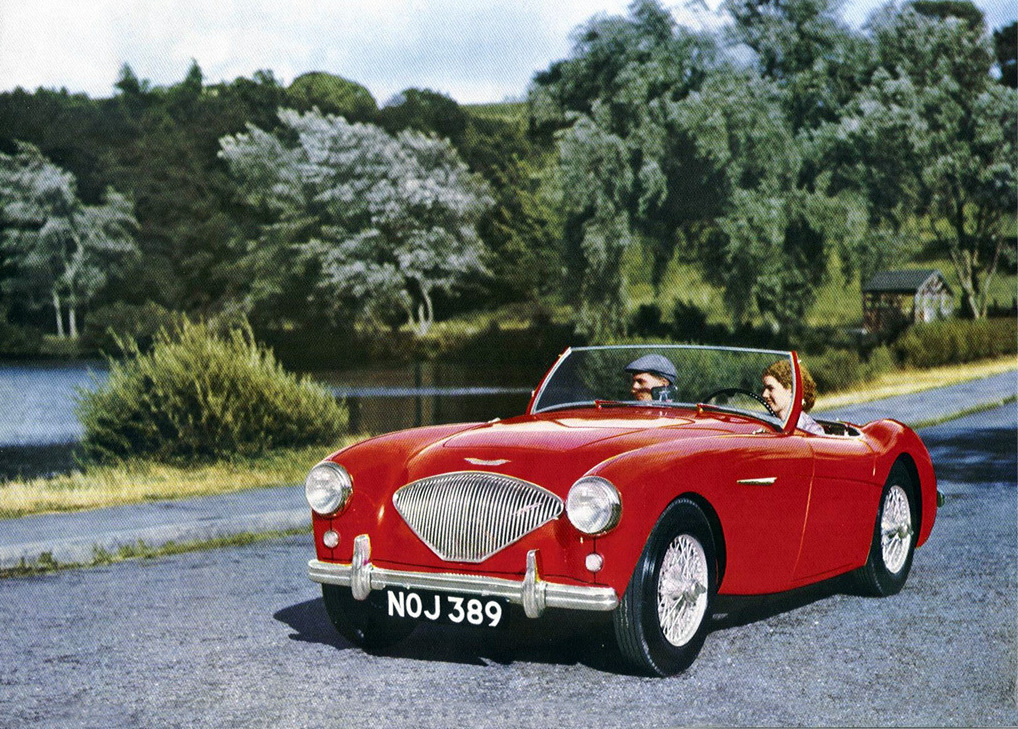
MG’s hopes of producing a modern sports car were severely dented when Lord turned the car down to concentrate on the Austin-Healey, launched in 1953 to replace the Austin A90 Atlantic, which had failed to break into the American market.
But the decision proved short-sighted.
While the MG TF 1500 Midget, also launched in 1953, was a reasonably sophisticated sports car underneath, its pre-war styling suddenly looked antiquated next to the Austin-Healey and another 1953 car, the Triumph TR2.
MG began losing market share at a rapid rate, and the new car was finally given the green light to halt the slide.
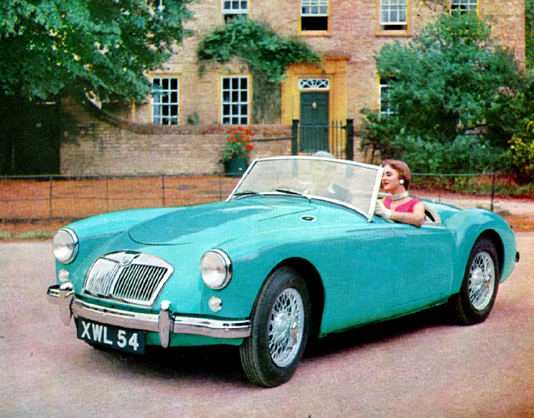
To mark just how big a change this was for the marque, MG went back to the beginning of the alphabet and called the car the MGA, advertising it as “the first of a new line”.
In with the new
The curvy, ponton style bodyshell wasn’t the only break with the past – the MGA also benefited from BMC’s now legendary B-series engine, and not the MG T series XPAG engine as originally intended.
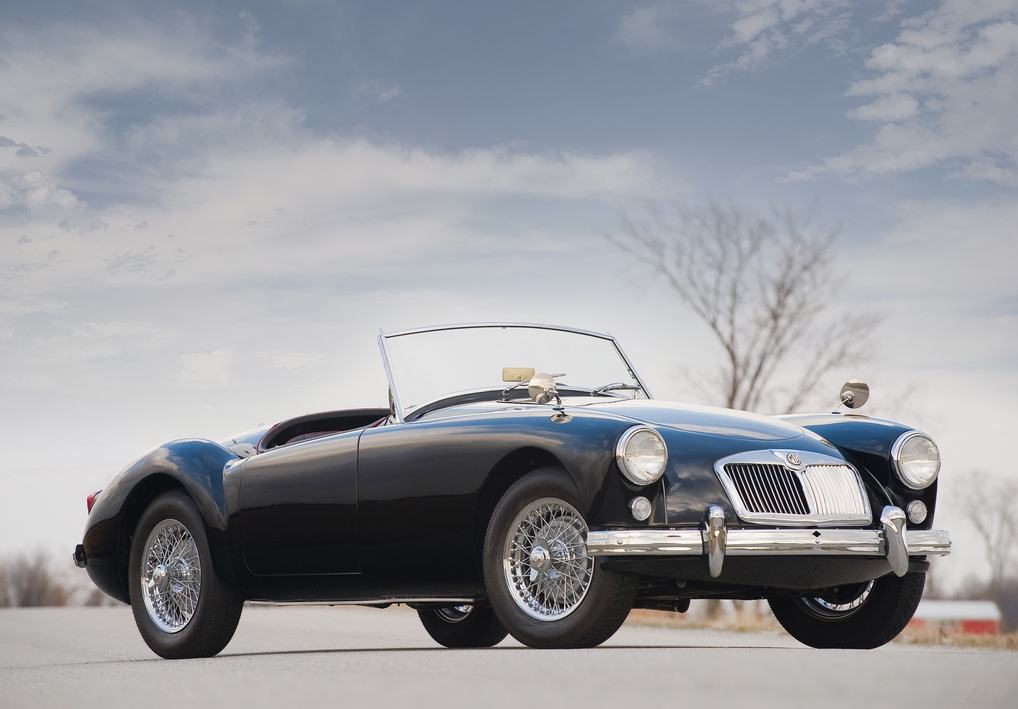
The inline four cylinder, 1489cc version of the engine was first used in the MG Magnette sports saloon in 1953, followed by the Morris Oxford and Austin Cambridge.
It would go on to power the MGB in 1798cc form, as well as the Morris Marina.
The MGA’s engine was fed by a pair of SU H4 carburettors, and initially produced 68bhp, increased to 72bhp soon after production began in 1955.
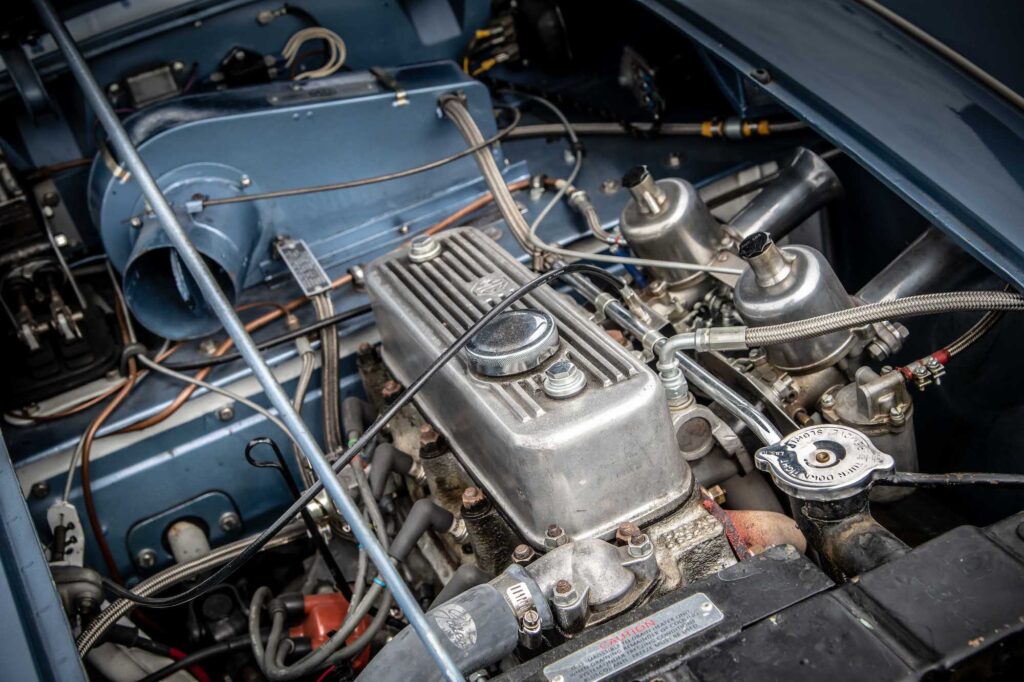
Independent front suspension with wishbones and coil springs was joined by a traditional semi-elliptic leaf spring with live axle set up at the rear.
Like the T-Series, there was rack and pinion steering, with Lockheed hydraulic drum brakes front and rear and a four-speed gearbox.
The convertible MGA had no door handles, with the doors opened via a cable on the inside of the door, but the coupe version introduced soon after the launch was fitted with external handles.
MGA’s sporting credentials
Before the MGA’s launch, MG was determined to give the new car a boost to its sporting credentials.
First, the company took the special-bodied EX179, based on an earlier MGA prototype, to the Bonneville salt flats in the US in August and September 1954 to take on a number of speed records.
The car didn’t disappoint, taking seven international speed records and 28 American National Class F records, recording a top speed of 153mph and averaging 120.74mph over 12 hours.
Next, MG built four cars, called EX182, for the 24 Hour of Le Mans in 1955, racing in the Prototype class.
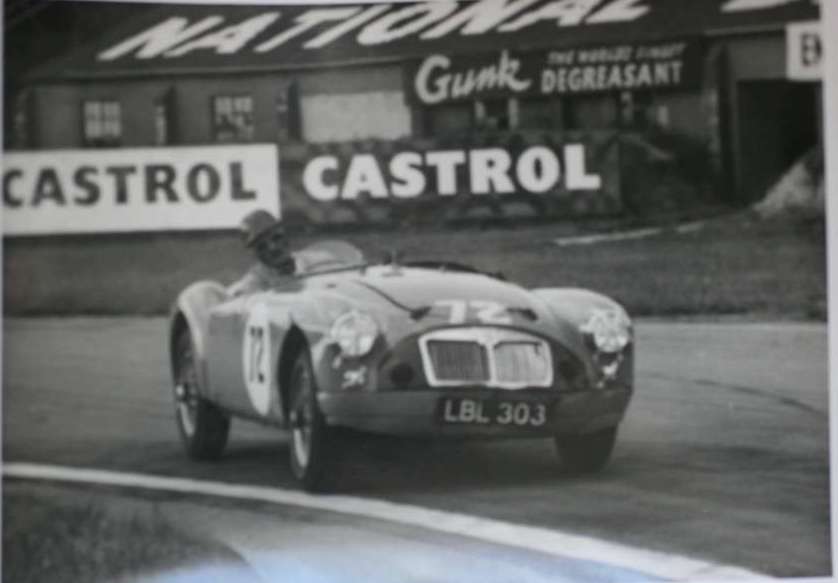
Three were in British Racing Green, two to race and one reserve car (which ended up racing), and one test car painted red.
One car crashed, and the other two performed creditably with 12th and 17th placed finishes.
MG hoped that these feats would serve them well when the car launched later that year.
MGA first impressions
If fans of the traditional MGs were aghast at this sleek new roadster, their fears were probably put to one side once they’d driven it.
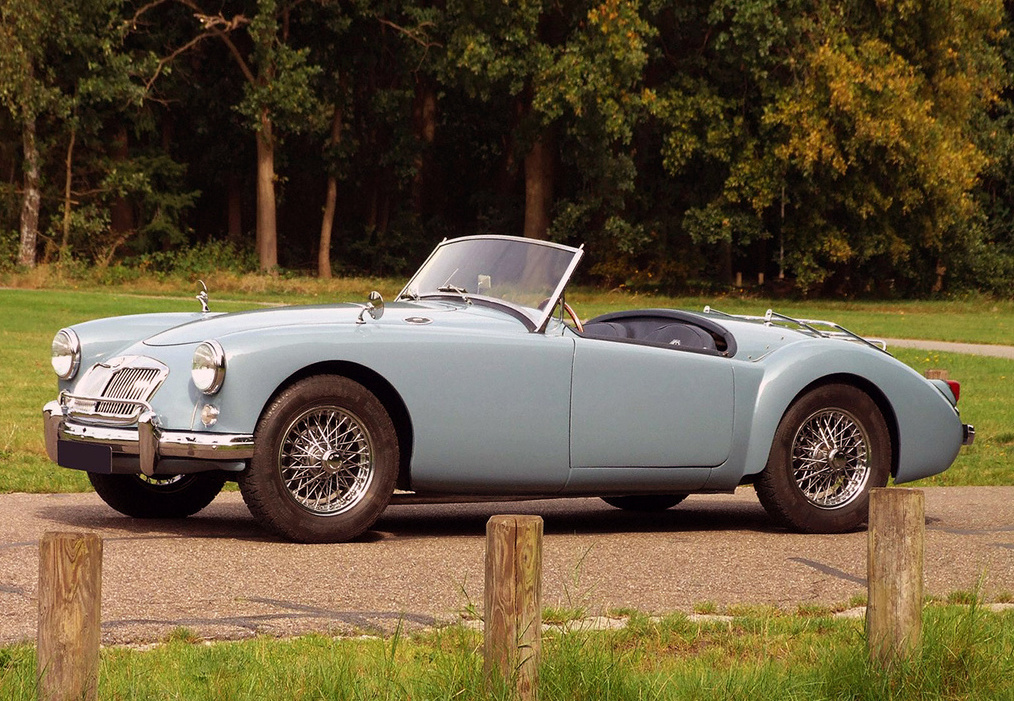
The Autocar tested the Model A in September 1955, and declared the new car a joy to drive.
“Long, winding hillside roads are a joy to traverse; the car rockets to the top in third gear,” it wrote.
“Fast cornering was a joy, the driver being able to position the car exactly where he wanted, and exit from a corner is also very satisfactory.
“On Continental roads it was possible to cruise for mile after mile with the speedometer needle between 90mph and 100mph.”
The MGA very nearly broke the 100mph barrier, maxing out at about 97mph, with a 0-60mph time of between 15 and 16 seconds.
Costing £844 including taxes at launch, the MGA came with optional knock-off wire wheels and HMV radio.
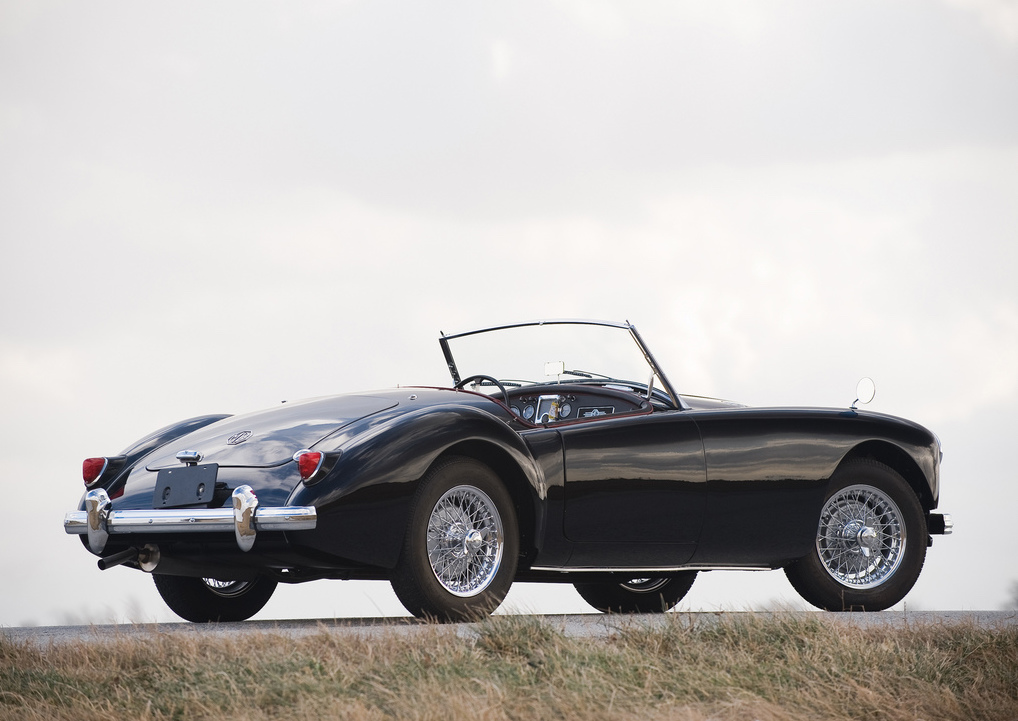
The Motor magazine praised a “smooth and good-looking body whose lines follow contemporary style, and a performance which puts it at least on a competitive footing with the smaller fast sports cars to which we have become accustomed”.
The new car was “compact, manoeuvrable and lively”, and “regards the carriage of luggage as secondary to the sport of motoring”.
“To drive the MGA on a winding open road is sheer enthusiast’s delight,” the magazine added. “The cornering power of the car is extremely good, holding it down in a manner to give the driver complete confidence, and seeming almost indifferent to the type of road surface.
“The newest MG must be summed up as enthusiastically as it was everywhere received.”
MGA: the view from America
America was a hugely important market for MG, so it’s worth taking a look at what the motoring press across the Pond thought of the marque’s brave new world.
Road & Track, writing about this “new and beautiful baby” from Abingdon, described it as the “most complete, most extensive design change in 20 years”.
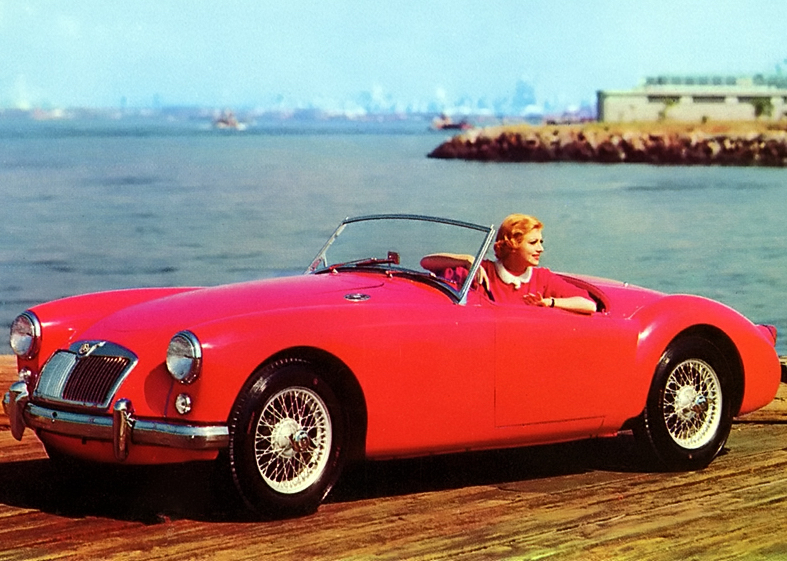
Griff Borgeson, writing in Car & Driver, noted that the “downright beautiful” Model A was easily 10mph faster than the MG TF, and would provide stiff competition for the Porsche 1600 Speedster and Alfa Giulietta Sprint.
Its body was described as “sleek and suave”, but the driving experience had a very definite “MG character”.
“In spite of its contemporary look, better handling and thrustier performance, the ‘A’ is still pure old-line MG Midget,” wrote Borgeson.
“Like its ancestors it’s a whole lot of fun to drive in spite of – or maybe because of – its imperfections.”
Pointing to MG’s long-held motto of “Safety Fast”, he noted that the MGA’s “good steering, roadholding and acceleration are backed up by a set of genuinely outstanding brakes.
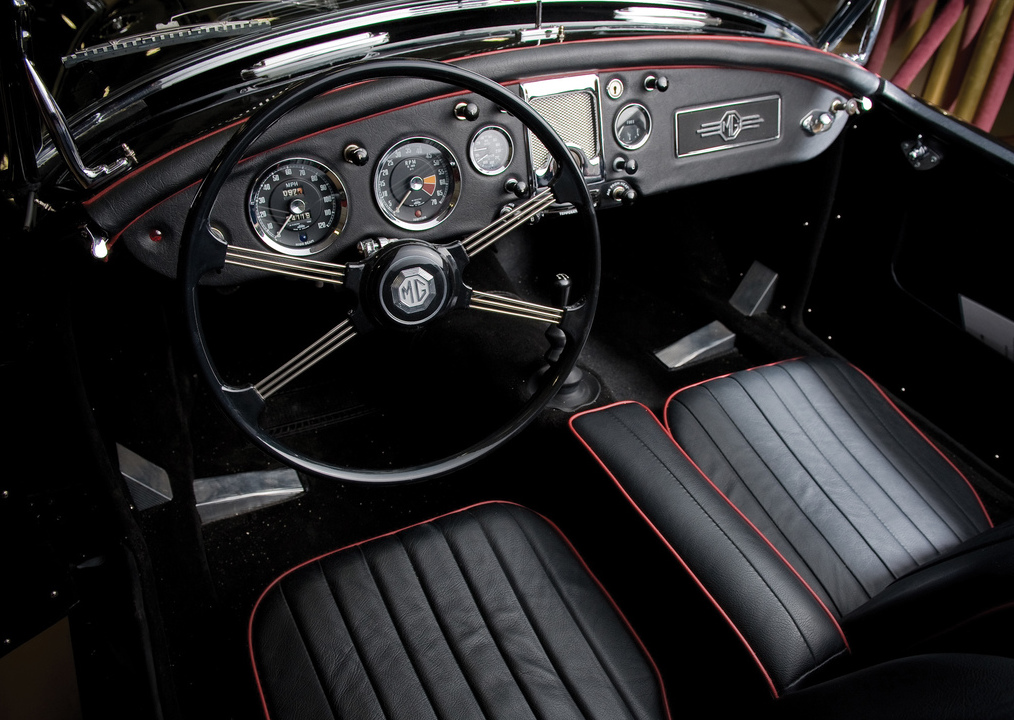
“Its look and feel of quality closely approach those of some cars that cost twice as much money. “The body feels and is very substantial. The quality of the painted finish is good, there’s no skimping on the instrument panel, and the reinforced bumpers are very adequate.
“This is a basically safe, friendly, likeable car – a genuine, well-built sports machine at a price that can’t be considered anything but reasonable and fair. We’d be much surprised if the “A” sales situation were anything but what it is: demand fantastically ahead of supply. It’s a very desirable car that will give years of economical driving pleasure and then have the high resale value that MG’s have earned.”
MGA Twin-Cam
The MGA’s performance was sprightly, rather than electrifying, and there had long been a desire for a more powerful version – especially from the US – when the Twin-Cam appeared in 1958.
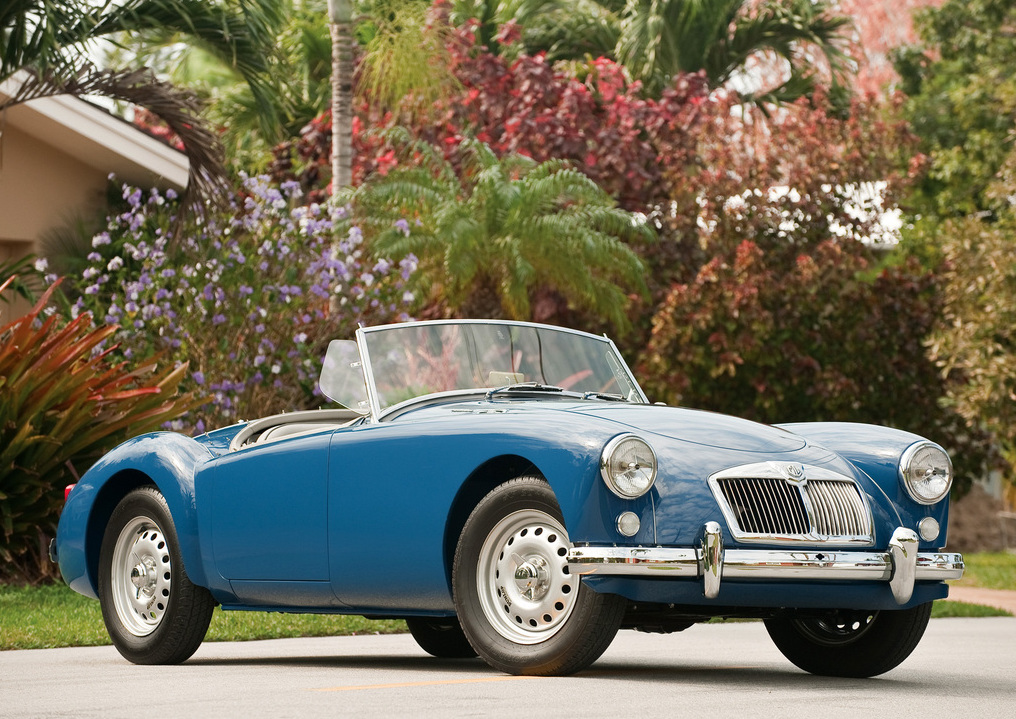
It wasn’t exactly unexpected, given EX182 had run at the Dundrod TT in September 1955 with a Twin-Cam version of the B-series engine.
It was the work of MG design engineer Gerald Palmer, who designed a twin overhead cam top end with an aluminium cylinder head that could be bolted on to the B-series engine.
Capacity was up to 1588cc, with a high compression ratio of 9.9:1 and twin SUs resulting in improved power of 108bhp.
MG’s original aim for the car was as a special performance model for enthusiasts who wanted to race, and had the skills to maintain what turned out to be a temperamental machine.
Strong demand
But demand was strong, even at an increased price of £1265 17s, and there were plenty of customers who just wanted a faster MGA.
And who could blame them, as the new car could hit a top speed of 114mph and hit 60mph in just 9.1 seconds. This was proper sports car performance for 1958.
Autocar tested a Twin-Cam in July 1958 and noted that “the extra performance is matched by the road holding, steering and brakes, and this car maintains the MG tradition of good looks coupled with a very fine performance”.
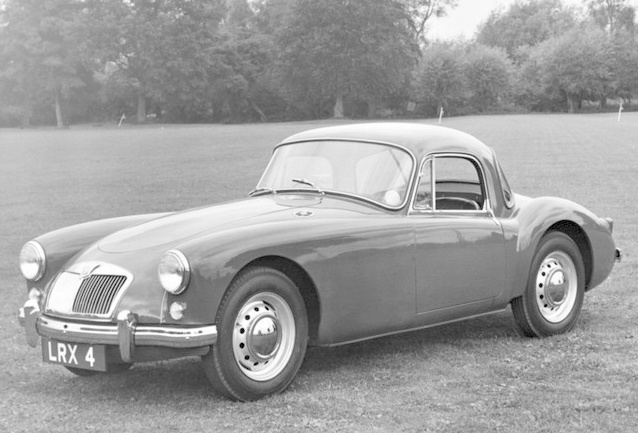
Sports Cars Illustrated described a “racing sports car that can be street driven”, with a marked difference in performance between the Twin-Cam and the standard car.
In the mid range, the car’s “boost can be felt immediately – where the standard pushrod engined car begins to taper off, the twin cam version is just starting to belt out its new-found power.
“It’s not a mad, bellowing slam in the back but a smooth, deceptive rush that can get you from 40mph to 70mph in just over four seconds.”
Road & Track called it a “tremendous step forward”, “designed primarily to regain prestige for the marque in production sports car racing”.
“However, this is a car for the genuine enthusiast types, and we think the pushrod job is going to be just as popular as ever.”
Motor felt that “only machines built specifically for sports car racing would keep pace with this 1,600cc touring two-seater in a standing start to 60, 70 or 80mph.”
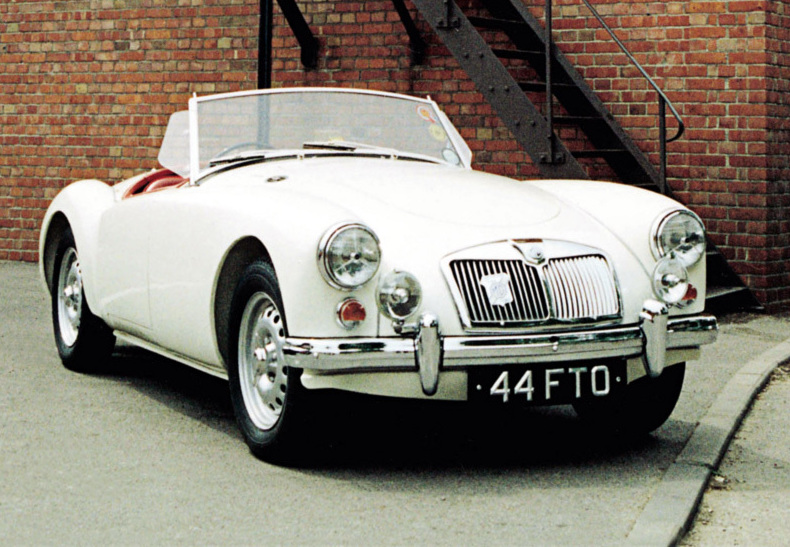
However, it wasn’t long before the Twin-Cam engine started to cause problems, with holes in the pistons the main complaint, possibly caused by detonation.
The problem was mostly cured by reducing the compression ratio to 8.3:1, with a small loss of power, but by then the car’s reputation had suffered badly and sales slumped.
As a result, the Twin-Cam was dropped in 1960, with between 2,100 and 2,200 produced.
MGA 1600 arrives
Away from the Twin-Cam, the standard MGA got a performance boost for 1959, receiving the 1588cc SOHC engine that provided 79.5bhp.
The Twin-Cam’s Girling disc brakes were fitted at the front, but drum brakes were retained at the rear.
Adrian Flux Classic Car Insurance
The rare De-Luxe version used up some parts left over from the Twin-Cam’s demise, including a modified chassis, Dunlop Centre Lock steel wheels and four-wheel disc brakes.
Motor described a “welcome improvement in acceleration” over the earlier standard model, with a 0-60mph time of 13.3 seconds, while Autocar said it remained “one of the most popular sports cars not only in England but also abroad”.
“Indeed, as a dollar earner there are few more successful cars.”
MGA Mark II
For 1961, the MGA Mark II was launched with another increase in engine size, up 34cc to 1622cc, with larger inlet valves and changes to the inlet and exhaust tracts plus larger combustion chambers.
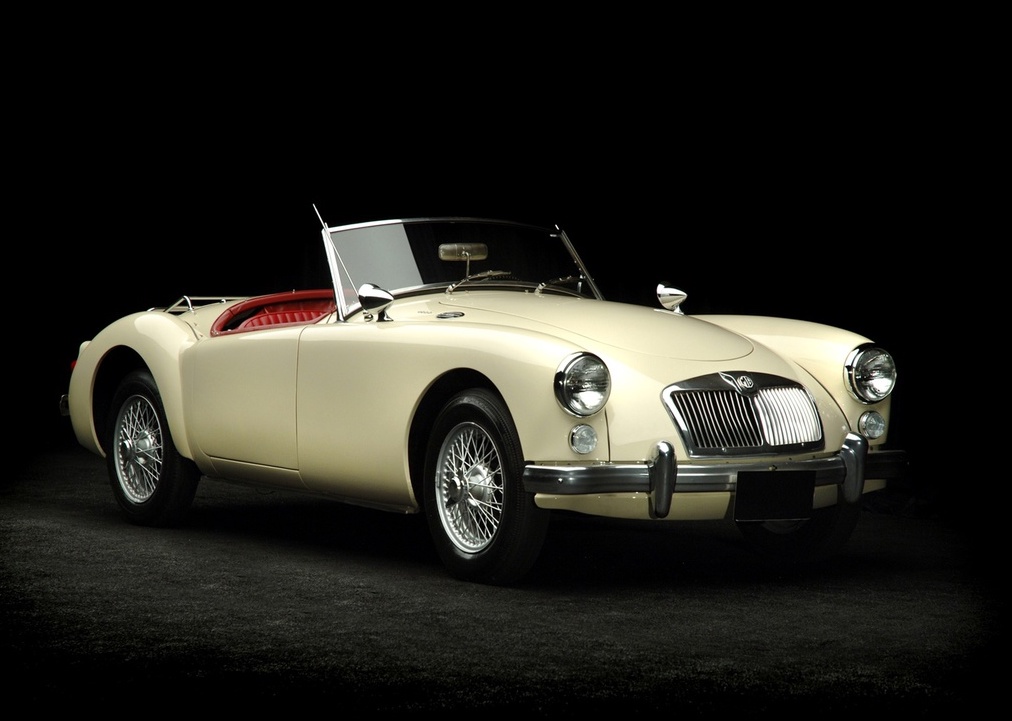
Power was up to 90bhp at 5,500rpm, and a change to the final drive gearing to 4.1 resulted in higher cruising speed at lower revs and improved fuel consumption.
There was a little more performance achieved, with a top speed of 105mph and a 0-60mpg time of 12.8 seconds – the quickest for a non Twin-Cam MGA.
According to Autocar, all this was achieved “in a more effortless manner”.
Outwardly, the only changes were a recessed grille and taillights from the Morris Mini.
American magazine Motor Trend said that, like all of its Abingdon predecessors, the MGA remained “a true sports car”.
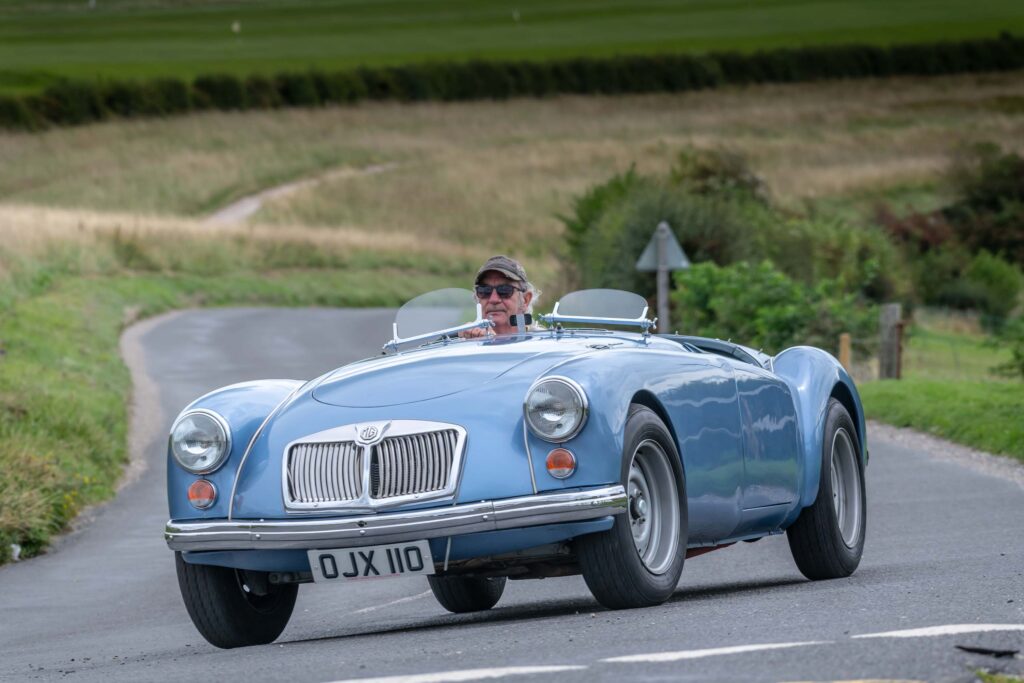
“In its price category it has come to be the standard against which other sports cars are judged,” it wrote.
“As a fun car, an automobile that features basic driving pleasure, it is hard to beat. An outstanding automobile for the money.”
In total, 101,081 MGAs were produced, with the vast majority exported, many of them to the US.
Work had begun on a replacement for the MGA as early as 1958 with the EX205 prototype.
This would go on to become the MGB, fitted with a larger, 1798cc version of the B-Series engine.
The B would be in production for 22 years, encompassing the BMC, British Leyland and Rover Group ownerships, its simpler lines ageing well before time finally caught up with it.
But it’s the MGA that was arguably the prettier car, and a hugely important machine in dragging MG out of the pre-war era and into the modern world.






